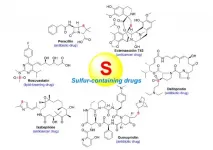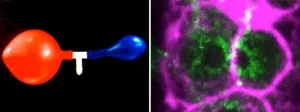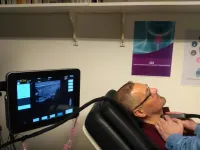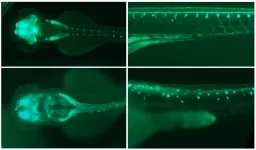INFORMATION:
This article provides the most up to date review of sulfur-containing natural products from marine microorganisms from their first reporting in January 1987 to December 2020.
Article reference: Hai, Y., Wei, MY., Wang, CY. et al. The intriguing chemistry and biology of sulfur-containing natural products from marine microorganisms (1987-2020). Mar Life Sci Technol (2021). https://doi.org/10.1007/s42995-021-00101-2
Keywords: Sulfur-containing natural products, marine microorganisms, molecular diversity, bioactivities, marine drugs
Marine Life Science & Technology (MLST) provides a platform that introduces new discoveries and theories associated with marine organisms, bioresources, and biotechnology. The journal is intended for marine scientists, biological oceanographers, conservation biologists, marine technologists, policy makers and legislators. Accordingly, we publish original research papers across a broad range of marine life sciences and technologies with an emphasis on synergistic interactions of multiple disciplines. Both theoretical and practical papers are welcome, including laboratory and field experimental studies relevant to marine life science and technology. Focused reviews, viewpoints, comments, and short communications are also accepted. As the journal's aim is to foster multidisciplinary approaches to marine sciences, authors are encouraged to emphasise the relevance of their work in relation across the journals key-disciplines.
For more information, please visit https://www.springer.com/journal/42995/
Editorial Board: https://www.springer.com/journal/42995/editors
MLST is available on SpringerLink (https://link.springer.com/journal/42995/volumes-and-issues).
Submissions to MLST may be made using ScholarOne ManuscriptsTM (https://mc03.manuscriptcentral.com/mlst).
Abstracted and indexed in:
Astrophysics Data System (ADS)
CNKI
Dimensions
EBSCO Discovery Service
Google Scholar
Institute of Scientific and Technical Information of China
Meta
Naver
OCLC WorldCat Discovery Service
ProQuest-ExLibris Primo
ProQuest-ExLibris Summon
TD Net Discovery Service
ISSN 2662-1746
Chemistry and biology of sulfur containing natural products from marine microorganisms
2021-06-01
(Press-News.org) The intriguing chemistry and biology of sulfur?containing natural products from marine microorganisms (1987-2020)
https://doi.org/10.1007/s42995-021-00101-2
Announcing a new publication for Marine Life Science & Technology journal. In this review article the authors Yang Hai, Mei?Yan Wei, Chang?Yun Wang, Yu?Cheng Gu and Chang?Lun Shao from Ocean University of China, Qingdao, China and Syngenta Jealott's Hill International Research Centre, Berkshire, UK consider the chemistry and biology of sulfur?containing natural products from marine microorganisms.
Natural products derived from marine microorganisms are a potential source of new compounds for drug discovery. The marine environment hosts many sulfur-containing natural products with numerous biological functionalities, for example, antitumor, antibiotic, anti-inflammatory and antiviral properties.
The authors of this article have provided a comprehensive overview of the sulfur-containing natural products that are non-sulfated and have been isolated from marine organisms. The overview covers the published literature from January 1987 to December 2020. A total of 484 compounds were recorded. Of these 59.9% were thioethers, 29.8% were thiazole/thiazoline-containing compounds and 10.3% were sulfoxides, sulfones, thioesters etc. A selection of 133 compounds were further discussed in relation to their structure-activity relationships, mechanisms of action, biosynthesis, and druggability.
ELSE PRESS RELEASES FROM THIS DATE:
Academic journal Polar Science features science in the Arctic
2021-06-01
The National Institute of Polar Research (NIPR) publishes Polar Science, a peer-reviewed quarterly journal dealing with polar science in collaboration with the Elsevier B. V.. The most recent issue (Vol. 27 published in March 2021) was a special issue entitled "Arctic Challenge for Sustainability Project (ArCS)," which featured the former national (nation-wide) Arctic research project in Japan. The full text of this issue is freely accessible worldwide for a limited time until 10 September 2021.
The Arctic Research Project "Arctic Challenge for Sustainability (ArCS)" was carried out from September 2015 to March 2020 as a national flagship project funded by the Ministry of Education, Culture, Sports, ...
Hydraulic instability decides who's to die and who's to live
2021-06-01
In past studies, researchers have found that C. elegans gonads generate more germ cells than needed and that only half of them grow to become oocytes, while the rest shrinks and die by physiological apoptosis, a programmed cell death that occurs in multicellular organisms. Now, scientists from the Biotechnology Center of the TU Dresden (BIOTEC), the Max Planck Institute of Molecular Cell Biology and Genetics (MPI-CBG), the Cluster of Excellence Physics of Life (PoL) at the TU Dresden, the Max Planck Institute for the Physics of Complex Systems (MPI-PKS), the Flatiron Institute, NY, and the University of California, Berkeley, found evidence to answer the question of what triggers this cell fate decision between life and death in the germline.
Prior studies ...
Larger sample sizes needed to avoid false negative findings in vitamin D trials
2021-06-01
Researchers from Trinity College Dublin have developed a novel set of tools for designing vitamin D clinical trials that capture large seasonal and population-wide differences in vitamin D status, typically seen in individuals. Their study published in the journal Scientific Reports (today, Monday 31st May 2021) provides a framework for clinical trials to establish whether vitamin D supplementation is effective against a given disease.
The study also reveals that many trials which failed to find any association between vitamin D and disease prevention may have been underpowered or conducted without enough subjects to detect a benefit of vitamin D.
You can read the full journal paper here: https://go.nature.com/3uERjgO
The ...
What could possibly go wrong with virtual reality?
2021-06-01
YouTube is a treasure trove of virtual reality fails: users tripping, colliding into walls and smacking inanimate and animate objects. By investigating these "VR Fails" on YouTube, researchers at the University of Copenhagen have sought to learn more about when and why things go sideways for users and how to improve VR design and experiences so as to avoid accidents.
Millions of YouTube viewers have enjoyed hearty laughs watching others getting hurt using virtual reality - people wearing VR headsets, falling, screaming, crashing into walls and TV sets, or knocking spectators to the floor. Some of us have even been that failing someone. Now, videos of virtual reality mishaps, called "VR Fails", ...
Hybrid redox-flow battery with a long cycle life
2021-06-01
Redox-flow batteries store electrical energy in chemical compounds that are dissolved in an electrolyte. They are a particularly promising alternative to lithium-ion batteries as stationary energy storage. A team headed by Prof. Dr. Ingo Krossing from the Institute of Inorganic and Analytical Chemistry at the University of Freiburg has succeeded in developing a non-aqueous All-Manganese Flow battery (All-MFB) that uses sustainable manganese as its active material and has a long cycle life. The researchers present the results of their work in the latest edition of Advanced Energy Materials.
Active materials are ...
Artificial intelligence enables smart control and fair sharing of resources in energy communities
2021-06-01
Energy communities will play a key role in building the more decentralised, less carbon intensive, and fairer energy systems of the future. Such communities enable local prosumers (consumers with own generation and storage) to generate, store and trade energy with each other -- using locally owned assets, such as wind turbines, rooftop solar panels and batteries. In turn, this enables the community to use more locally generated renewable generation, and shifts the market power from large utility companies to individual prosumers.
Energy community projects often involve jointly-owned assets such as community-owned wind turbines or shared battery storage. Yet, this raises the question of how these assets should be controlled - often in real time, and how the energy outputs jointly-owned ...
The LUCA device proves its readiness for a better thyroid cancer screening
2021-06-01
Thyroid nodules are a common pathology having a prevalence of 19-76% when screened with ultrasound, with higher frequencies in women. Current medical methods used to assess the malignancy of a nodule consist in performing an ultrasound, followed by a Doppler ultrasound, and then a biopsy. However, unfortunately, these methods present both low specificity and low sensitivity. This insufficient effectiveness in accurately being able to diagnose thyroid tumors leads to many unclear or unnoticed cases as well as many others that undergo unnecessary surgeries (false positives) and increase the cost ...
Gene plays major role in brain development
2021-06-01
When the Augustinian monk Gregor Mendel crossed white-flowering with purple-flowering pea plants in the mid-19th century, he made an interesting discovery: The offspring were all purple. He therefore called this trait dominant, while the white blossom color was recessive. The reason for this phenomenon: In peas, each gene occurs twice. One version comes from the maternal plant and the other from the paternal plant. If a pea has inherited the gene for purple flower color from one parent, but the gene for white flower color from the other, purple wins. Only when two genes for white flowers come together in the offspring plant is it white.
Humans also have genes that are inherited either dominantly or recessively. However, the case is not so clear for the mutations investigated ...
The secret lives of Canada lynx
2021-06-01
Using a Fitbit and a spy mic, scientists have discovered new insight into the behaviour of the elusive Canada lynx. A new study by researchers from McGill University, University of Alberta, and Trent University provides a first look at how miniaturized technology can open the door to remote wildlife monitoring.
"Working on one of the boreal forest's top predators, the Canada lynx, we found that two different technologies, accelerometers and audio recording devices, can be used to remotely monitor the hunting behaviour of predators, even documenting the killing of small prey," says lead author Emily Studd, a Postdoctoral Fellow under the supervision of Murray Humphries at McGill University and Stan Boutin at University ...
Survey shows weak trust in Canadian courts on energy projects, climate policy disputes
2021-06-01
The University of Ottawa's Positive Energy program released new survey results showing that a large segment of the Canadian public does not trust the courts to settle disputes over energy projects or climate policy. The survey was conducted by Positive Energy's official pollster, Nanos Research.
Canadians were asked: On a scale of 0 to 10, where 0 means do not trust at all and 10 means trust completely, how much do you trust the courts to settle disputes over government decisions on energy projects? They were asked the same question for climate policy. The results are very similar. Only one in three Canadians trust the courts to settle disputes over energy projects or climate policy (answering between 7 and 10: 31% for energy, 30% for ...







